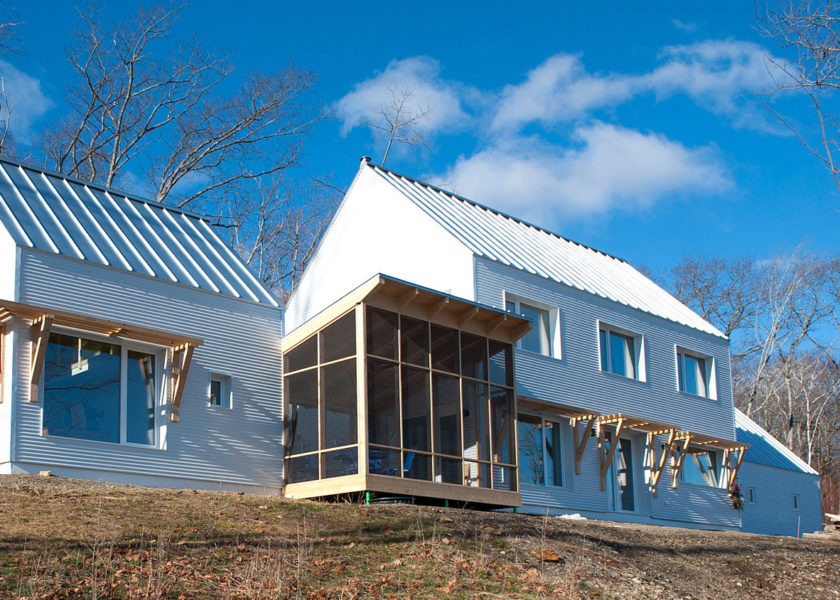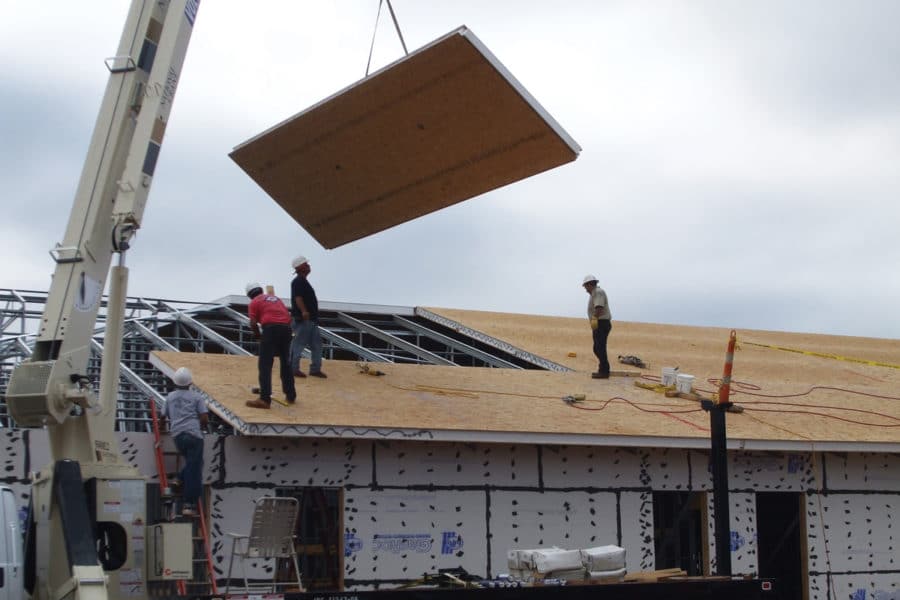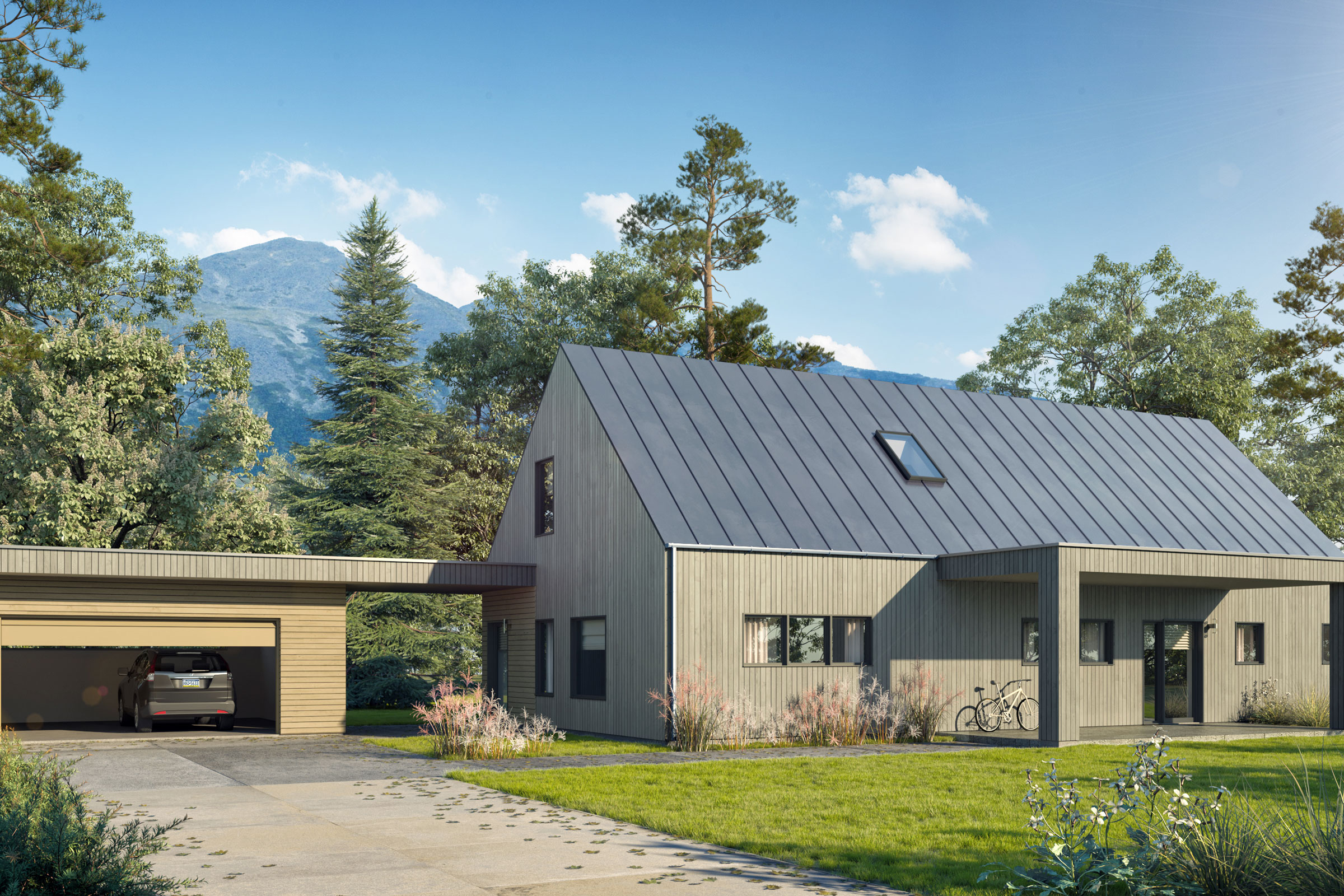Story at a glance:
- Modular homes are prefabricated houses prebuilt in sections, or modules, that are then transported and assembled onsite.
- Prefabricated technology is catching up to modern design, providing a much-needed design revamp to modular homes.
- Farmhouse modular homes are on the rise with designs that embrace simplicity, function, and natural materials.
Modular homes can get a bad rap. Although they can improve building efficiencies and be more sustainable, when it comes to design, modular homes are often thought to be—well, uninspired.
But prefabricated technology is catching up to modern design, and many architects and builders are taking advantage to dispel negative connotations around modular homes. And as modular home design improves, with it comes increased demand. Many homeowners are now opting for modular homes over their stick-built counterparts because they are more affordable, energy-efficient, and durable.
One style that has particularly taken off is farmhouse modular homes. Let’s explore the basics of a modular home and how changes in approach have led to more design-friendly projects like farmhouse modular homes.
What is a Modular Home?

Ecocor has sustainability in mind as they build their projects by focusing on using 80-90% less waste. Photo courtesy of Ecocor
A modular home is a type of prefabricated, or prefab, house, with at least 70% of the structure prefabricated. Like other prefab home designs, modular homes are pre-built and created in sections, or modules, that are then transported and assembled on-site.
Historically many builders have turned to prefabrication to improve jobsite efficiencies, labor productivity, and project schedules, as modular homes often take less time and are less expensive to build.
Building modular homes is also often more sustainable than conventional residential construction. Because prefab homes include a specific design, it’s typically easier to calculate the materials needed, which leads to less wasted materials.
The Evolution of Modular Home Design

Photo courtesy of FischerSIPS
One of the biggest critiques of modular homes is that, because they follow a set design, they are unattractive or less interesting aesthetically and are made with materials that are cheaper or aren’t up to par with modern design trends.
The good news is that prefabrication technology is changing to meet today’s design standards. And with it, architects are elevating not only what modular homes look like but also what it means to live in one.
Recognizing the demand for better design, many builders and manufacturers have moved away from offering a standardized package of materials to provide greater design flexibility and customization.
Additionally, many builders have shifted from stick-built panelizing construction to structural insulated panels (SIPs). SIPs are high-performance panels that consist of an insulating foam core that is sandwiched between two structural facings, typically oriented strand board (OSB).
In modular home building SIPs have become the go-to method for exterior walls and roof framing. And though SIPs might not come with noticeable aesthetic improvements, they do come with big benefits—namely that they are extremely durable, energy-efficient, and cost-effective. Sustainably speaking SIPs also help decrease the amount of lumber needed for a project and reduce waste.
Together these advances have made it so homeowners can enjoy all of the benefits of modular construction without compromising design.
Design Trend: Farmhouse Modular Homes
As design options have increased, farmhouse modular homes are on the rise. This design style emphasizes a cozy feel with a modern-yet-rustic look. Elements of warm minimalism also come into play, with farmhouse modular homes embracing simplicity and comfort.
Here are the key design features of farmhouse modular homes:
Emphasis on Function
One of the most important themes in farmhouse design is that every element has a purpose. Farmhouse design typically lacks ornamentation, instead opting for furniture and objects that emphasize function rather than decoration.
Natural Materials
Farmhouse design highlights materials found in nature. Reclaimed wood, stone, wicker, and cotton upholstery all play a big role.
Organic Color Palettes
Like its materials, farmhouse design also takes inspiration from outside for its color palette. Hues found in the great outdoors take rank, with earth tones and muted neutrals leading the way. Farmhouse-style homes also typically use matte finishes rather than glossy metals and coatings.
Variety of Textures
Although farmhouse styles lean into simplicity, one area that can be more playful is texture. Layering in contrasting textures into a space, such as raw wood and stone, adds visual interest in designs that can be otherwise muted in tone and colorways.
Design is always changing, and modular homes are no exception. Changing prefabricated technology has unlocked new design possibilities, and farmhouse modular homes are sure to be just the beginning.





